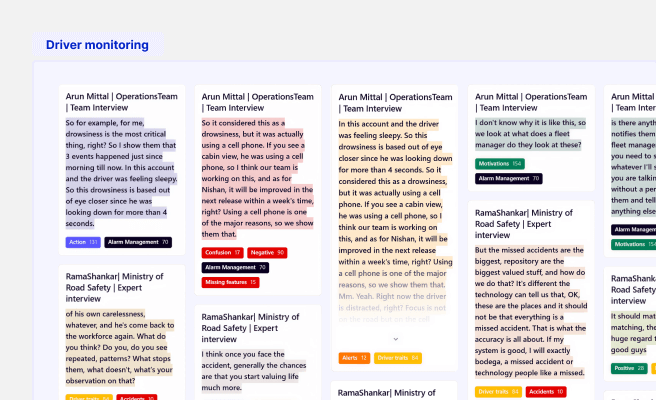Collaborative Design
<p>Collaborative design is a dynamic approach in which multiple stakeholders work together to create a product or service. This methodology is essential in fields requiring interdisciplinary expertise and rapid innovation, like sustainable UX design for climate tech. By pooling diverse skills and perspectives, collaborative design ensures that the final product is well-rounded, user-centric, and innovative.</p>
<p>The importance of collaborative design cannot be overstated. It fosters creativity, enhances problem-solving capabilities, and ensures that all viewpoints are considered. Historically, design processes were linear and siloed, but the shift towards collaboration has revolutionized how products are developed, particularly in technology-driven sectors such as climate tech.</p>
<h2>Benefits of Collaborative Design</h2>
<p>One of the primary benefits of collaborative design is the ability to leverage diverse expertise. For example, in climate tech, involving environmental scientists, UX designers, and software developers can lead to holistic and effective digital solutions. This multi-disciplinary approach facilitates the creation of products that are not only functional but also align with sustainability goals.</p>
<p>Another significant advantage is the acceleration of the design process. Collaborative design allows for real-time feedback, reducing the cycles of revisions. Tools like Figma (<a href="https://www.figma.com/" style="color:#2896FF; text-decoration: underline;">Figma</a>) and Miro (<a href="https://miro.com/" style="color:#2896FF; text-decoration: underline;">Miro</a>) enable teams to work simultaneously on designs, making remote collaboration seamless and efficient.</p>
<h3>Real-World Example</h3>
<p>A notable example of collaborative design in the climate tech industry is the development of <a href="https://projectdrawdown.org/" style="color:#2896FF; text-decoration: underline;">Project Drawdown</a>’s digital tools. This project involved a diverse team of climate scientists, UX designers, and software engineers working together to create interactive tools that visualize climate solutions. Their collaborative efforts resulted in user-friendly tools that effectively communicate complex data and actionable insights to a broad audience.</p>
<h2>Challenges in Collaborative Design</h2>
<p>Despite its many benefits, collaborative design also presents several challenges. One common issue is communication barriers, especially in remote teams. Misunderstandings can arise from differences in terminology or cultural perspectives. Tools like Slack (<a href="https://slack.com/" style="color:#2896FF; text-decoration: underline;">Slack</a>) and Zoom (<a href="https://zoom.us/" style="color:#2896FF; text-decoration: underline;">Zoom</a>) can help alleviate these issues by facilitating clear and consistent communication.</p>
<p>Another challenge is coordinating schedules and managing contributions from multiple stakeholders. Effective project management tools like Trello (<a href="https://trello.com/" style="color:#2896FF; text-decoration: underline;">Trello</a>) or Asana (<a href="https://asana.com/" style="color:#2896FF; text-decoration: underline;">Asana</a>) can help streamline workflows and ensure that all team members are aligned and on track.</p>
<h3>Overcoming Challenges</h3>
<p>To overcome these challenges, it is crucial to establish clear roles and responsibilities from the outset. Regular check-ins and collaborative platforms ensure that everyone stays on the same page. Additionally, fostering an inclusive culture where all team members feel valued and heard can significantly enhance collaboration.</p>
<h2>Practical Applications</h2>
<p>In practical terms, collaborative design can be implemented through various strategies. For example, co-design workshops bring together stakeholders to brainstorm and iterate on ideas collectively. These workshops can be particularly effective in aligning diverse perspectives and generating innovative solutions. Another approach is the use of collaborative design sprints, which are time-boxed periods that focus on rapid ideation and prototyping.</p>
<h3>Tools for Collaborative Design</h3>
<p>Several tools can facilitate collaborative design, including:</p>
<ul>
<li><a href="https://www.adobe.com/products/xd.html" style="color:#2896FF; text-decoration: underline;">Adobe XD</a>: A powerful tool for creating and sharing interactive prototypes.</li>
<li><a href="https://www.invisionapp.com/" style="color:#2896FF; text-decoration: underline;">InVision</a>: Enables real-time collaboration and feedback on design projects.</li>
<li><a href="https://www.sketch.com/" style="color:#2896FF; text-decoration: underline;">Sketch</a>: A design toolkit that enhances collaboration through shared libraries and cloud workspaces.</li>
</ul>
<h2>Conclusion</h2>
<p>Collaborative design is a transformative approach that harnesses the power of diverse perspectives to create innovative and user-centric products. By leveraging tools and strategies that facilitate effective collaboration, teams can overcome challenges and achieve remarkable results. For organizations in the climate tech sector, embracing collaborative design is not just beneficial but essential in developing impactful and sustainable digital solutions.</p> <p>To understand the power of design across industries and sectors, view our diverse portfolio of works. <a href="https://www.whatifdesign.co/work" style="color:#2896FF; text-decoration:underline;">View our portfolio</a>.</p> <p>If you’re looking for inspiration to elevate customer and user experience for enterprise-grade products, View our work with the Ministry of Health of Saudi Arabia for curating the UX of an <a href="https://www.whatifdesign.co/work/enterprise-software-for-hospitals" style="color:#2896FF; text-decoration:underline;">Asset Management Tracking Platform</a></p>
<p>Ready to get started? <a href="https://cal.com/akhilak/what-if-design?duration=30" style="color:#2896FF; text-decoration:underline;">Book a 1:1 consultation call</a> with us today.</p>

Let's scale your impact with great design.
Free consultation, no sales pitch
Thank you! Your submission has been received!
Oops! Something went wrong while submitting the form.
Let’s talk
Nothing great is built alone.
Let’s connect about your vision, our work and how we can collaborate.
Get in touch

